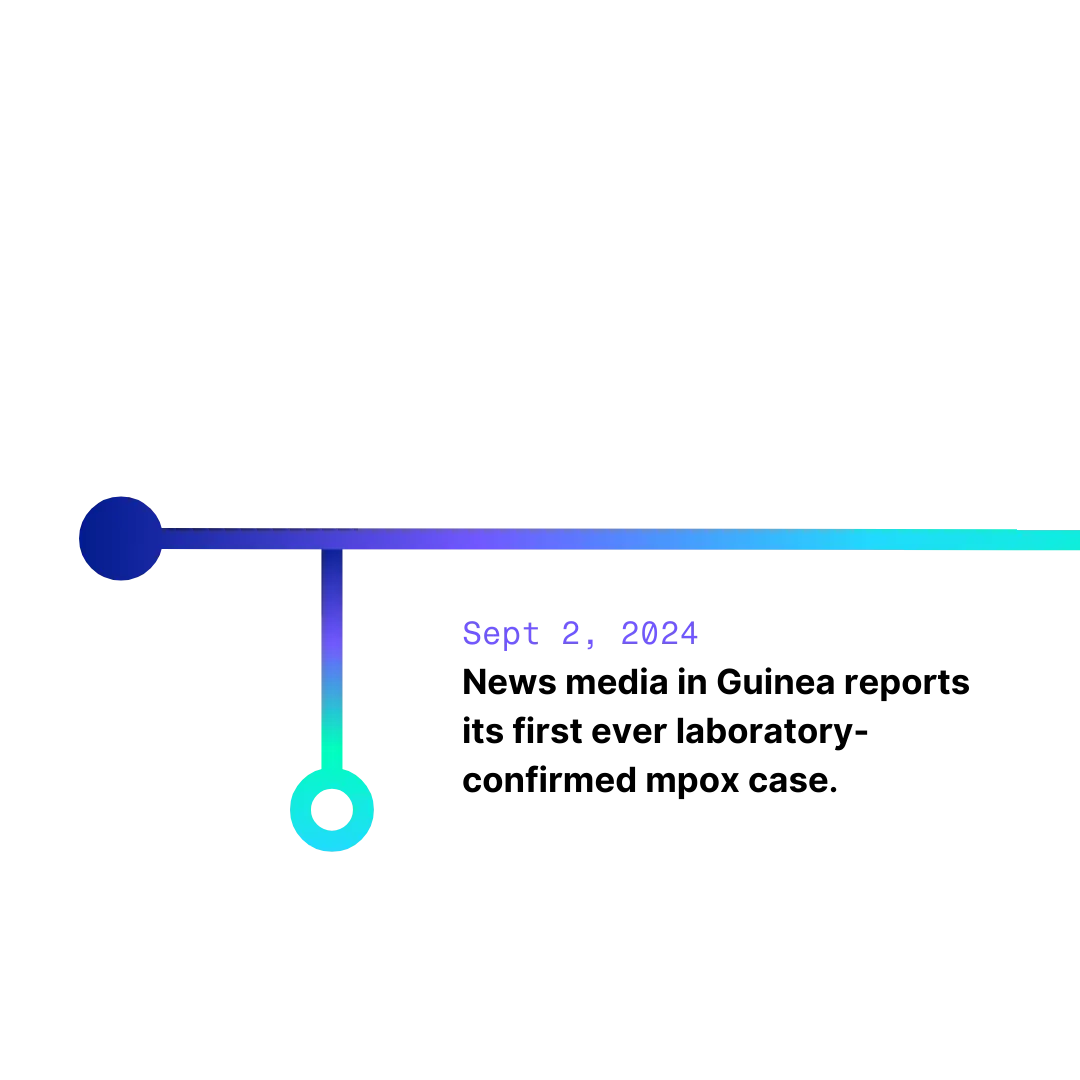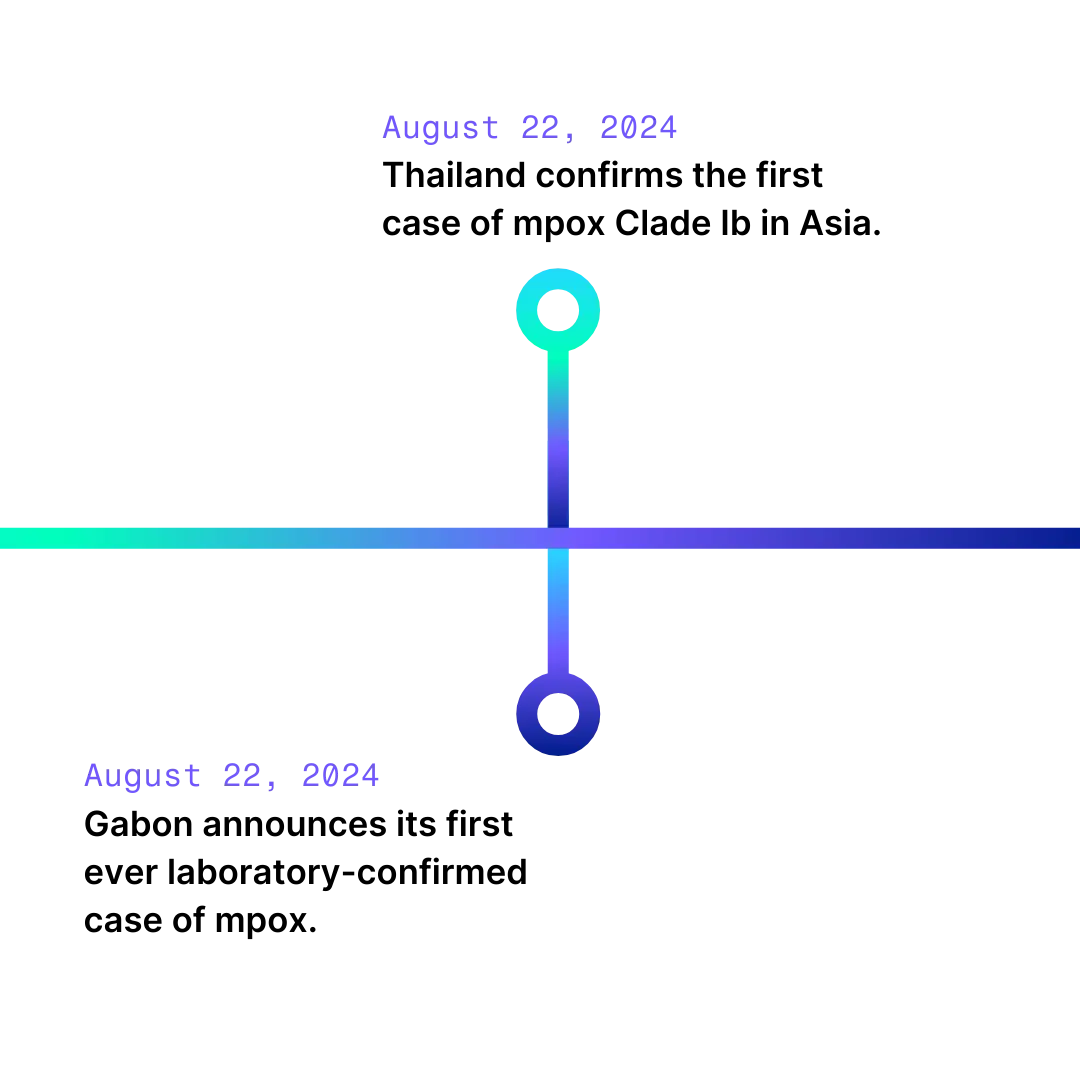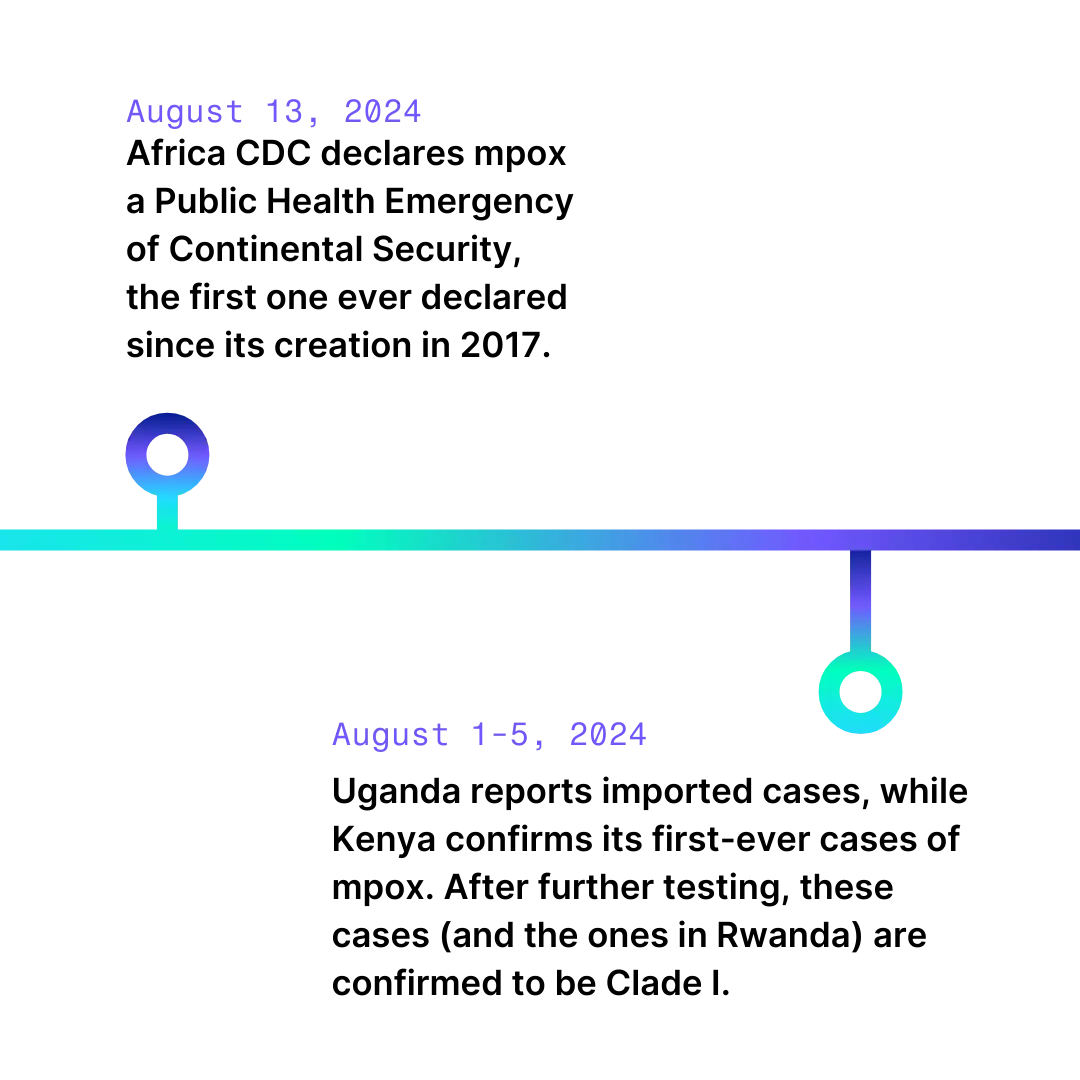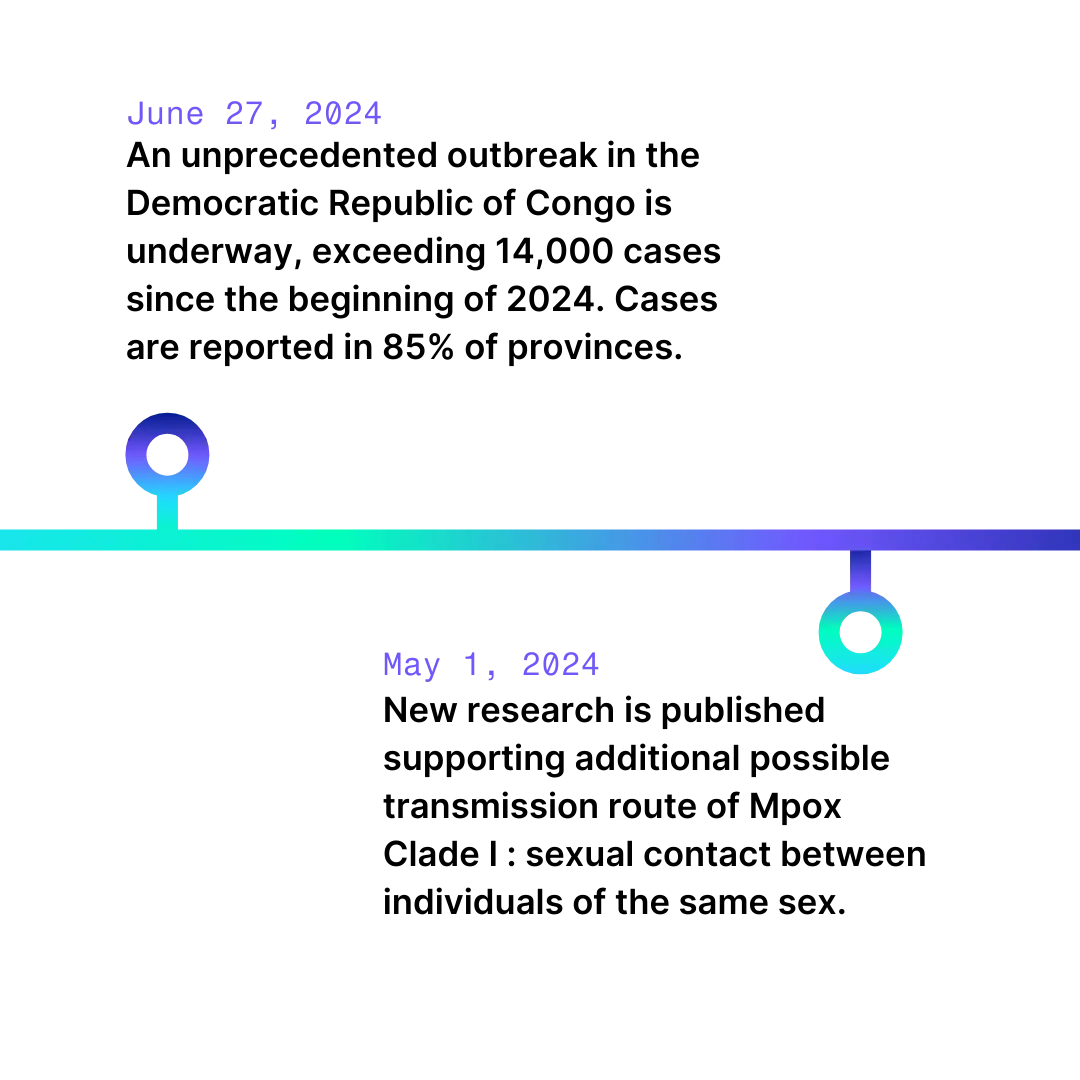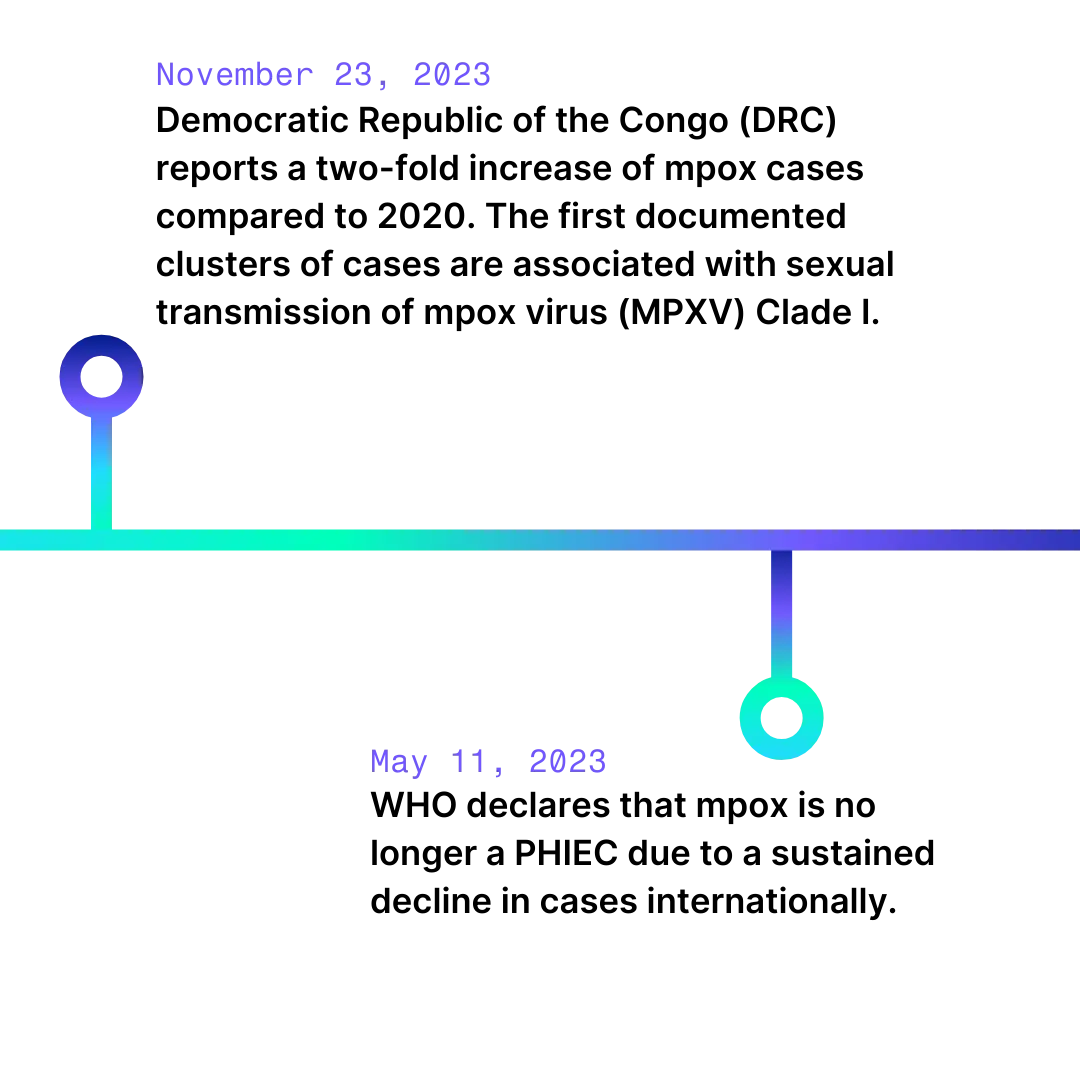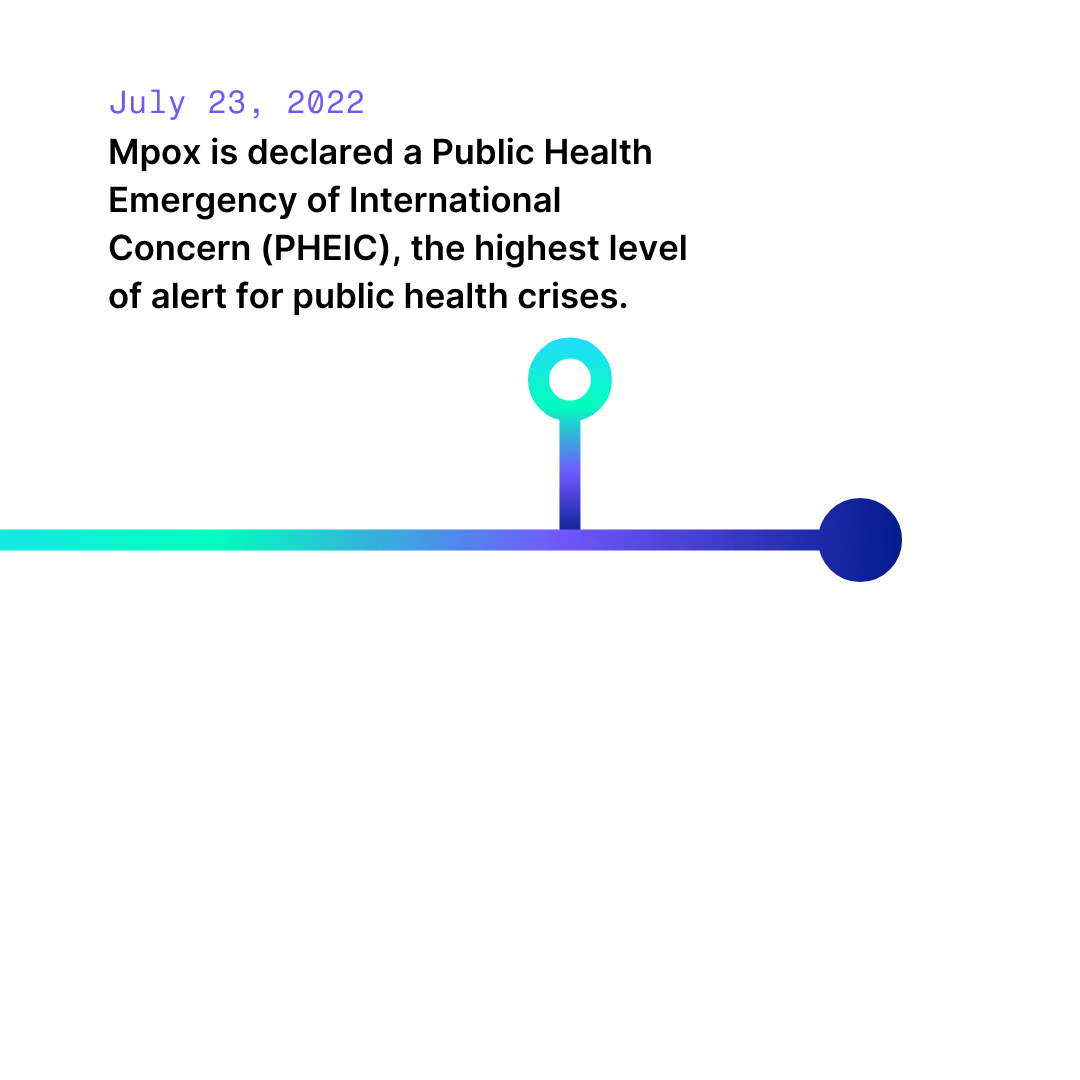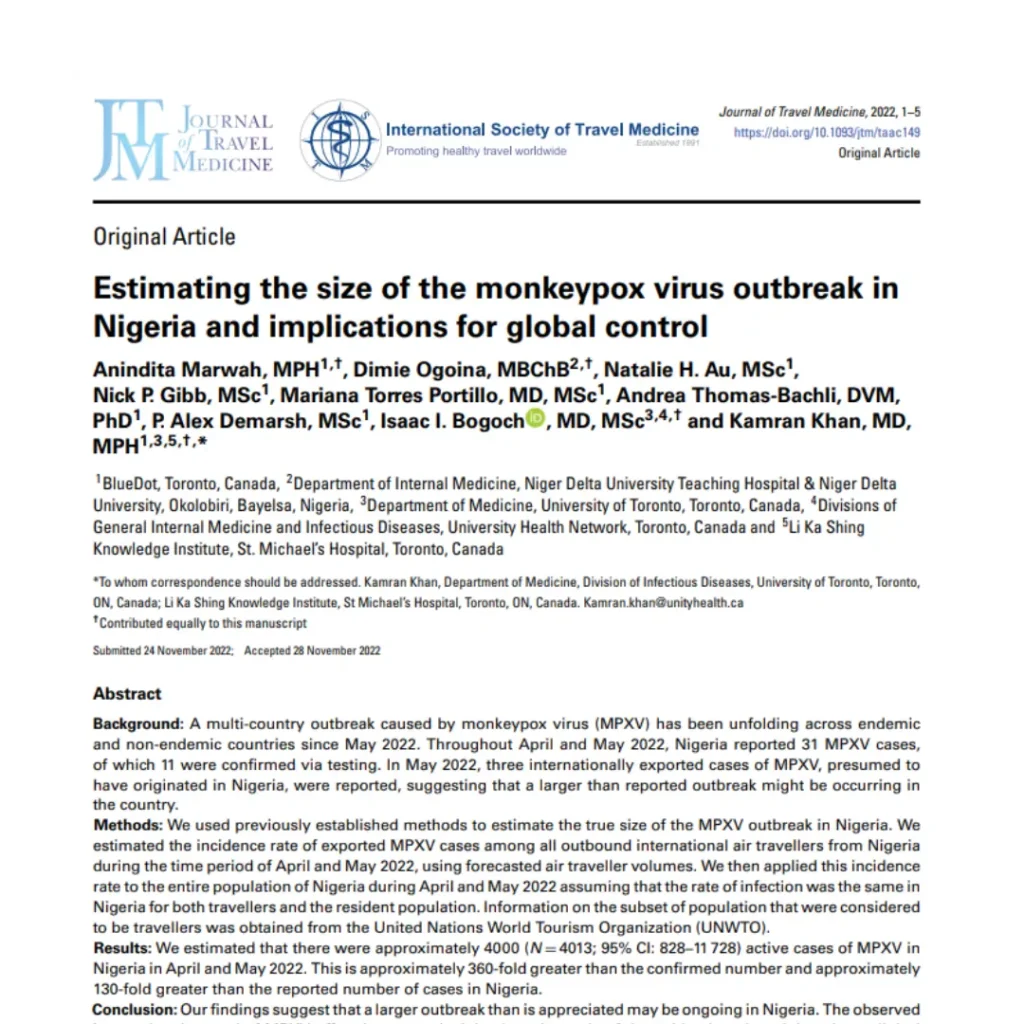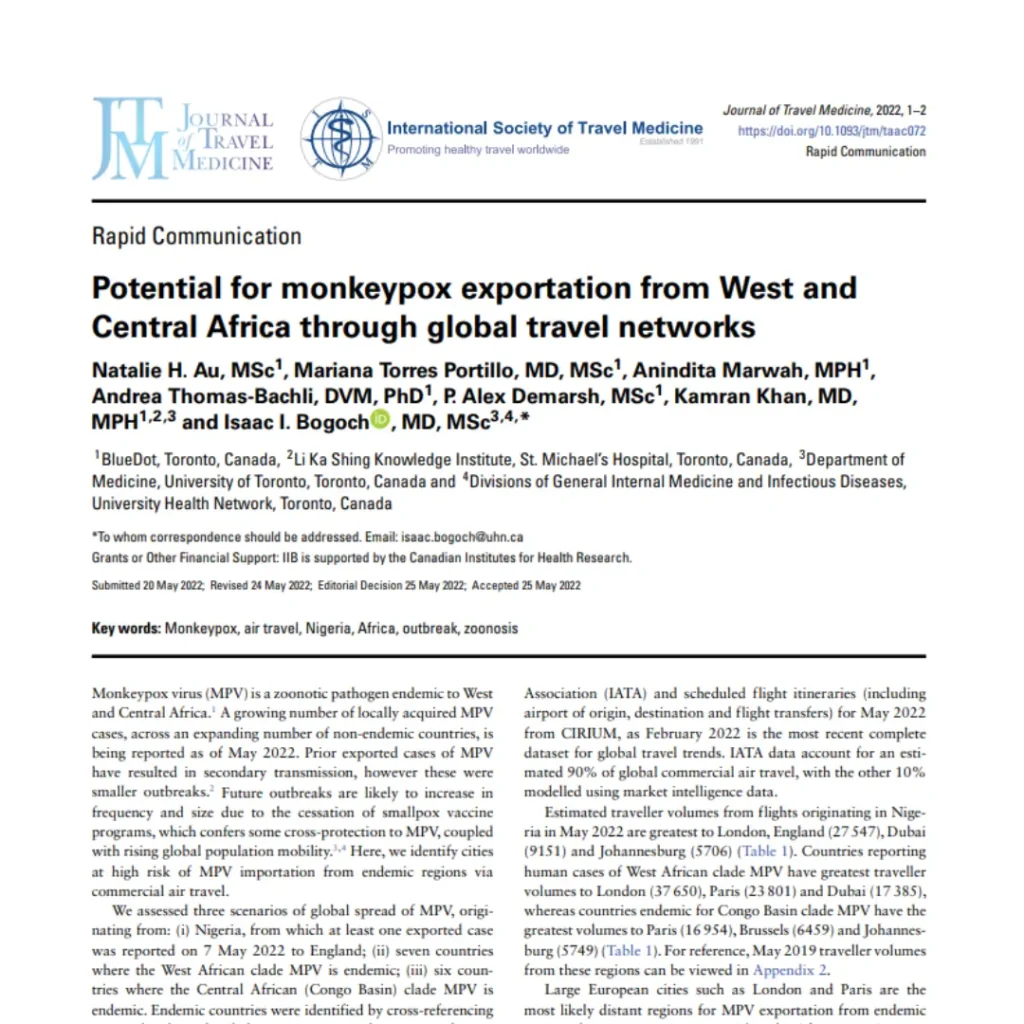Mpox insights & intelligence
Your hub for the latest on mpox.
Watch our briefing! Click to access the Uncovering mpox: The underestimated crisis and its international spread webinar.
Current
situation
On August 14, the World Health Organization (WHO) declared mpox a public health emergency of international concern (PHEIC), following the first-ever emergency declaration made by the Africa Centres for Disease Control and Prevention (CDC) a day prior. This is the second time the WHO has made this declaration for mpox in approximately two years.
Since the beginning of 2024, more than 15,000 cases and 500 deaths have been reported across Africa related to mpox. The Democratic Republic of the Congo (DRC) is the epicenter of the outbreak, where approximately 14,000 cases have been reported so far this year. Surrounding endemic regions are reporting an increase of cases, while others – namely Burundi, Kenya, Rwanda, and Uganda – are now reporting mpox cases for the very first time.
The mpox outbreak is marked by yet another concern: the emergence and rapid spread of a new strain, Clade Ib. Clade I is considered more severe than Clade II (which fueled the previous 2022 global mpox outbreak), is exhibiting numerous modes of transmission similar to Clade II, but may be harder to detect on tests. As such, there are likely many cases that continue to go undetected.
FAQ
Fast answers for your burning questions.
What is the difference between Clade I and Clade II?
The two clades of mpox virus differ in epidemiological patterns and clinical outcomes. Clade I strains are more severe and transmissible based on fairly limited information from past outbreaks, where pooled estimates of the case fatality ratio for Clade I were at least 7% greater than Clade II. It is unclear whether these differences are due to viral characteristics or additional factors including surveillance capacity to detect and report mild cases. The newly emerged MPXV Clade Ib carries an APOBEC3-type mutation, highlighting virus adaptation while circulating among humans. BlueDot tracks Clade I and Clade II cases separately, enabling clients to perform clade-specific trend analyses and compare global spread. Learn how here.
Where are there outbreaks of Clade I?
As of August 19, countries with confirmed local transmission of Clade I are Burundi, Central African Republic (CAR), Democratic Republic of the Congo (DRC), Kenya, Rwanda, and Congo.
How does mpox spread?
The ongoing Clade I outbreak has confirmed cases that occurred from sexual contact and non-sexual direct contact (such as household and healthcare facility contact). Typically, MPXV Clade I infections are secondary to zoonotic spillovers with limited human-to-human spread, however, no cases of suspected zoonotic transmission have been reported (thus a new designation, Clade Ib was proposed earlier in 2024).
Which populations are most impacted?
Children are currently the most impacted demographic from the ongoing outbreak in the Democratic Republic of Congo, with more than 70% of cases and 85% of deaths being among children aged 15 and under.
What public health measures have been taken?
On August 15 2024, the WHO declared mpox a PHEIC for the second time. This declaration aimed to accelerate research, funding and international public health measures and cooperation to contain the rapid spread of mpox. WHO partners are helping affected governments in the African regions to scale up the mpox outbreak response to interrupt disease transmission.
Download a sample report
Last updated: 08.14.2024
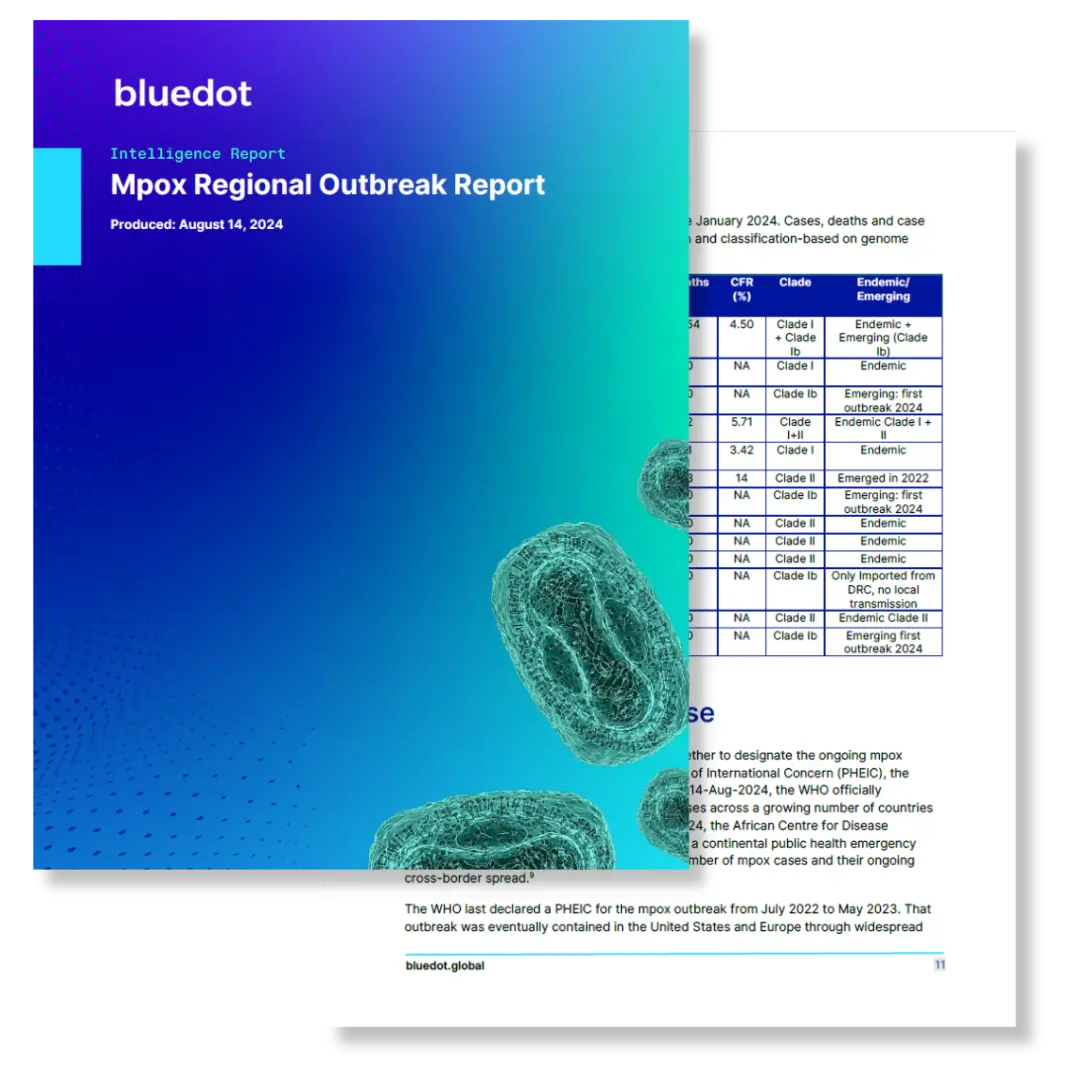
Archive
Contact us to learn more about how to get access to new and previous reports and alerts. Below you will find some of the major pieces of intelligence we have shared with clients. You can also read our published peer-reviewed papers on mpox here and here.

Mpox in Guinea - Alert 1
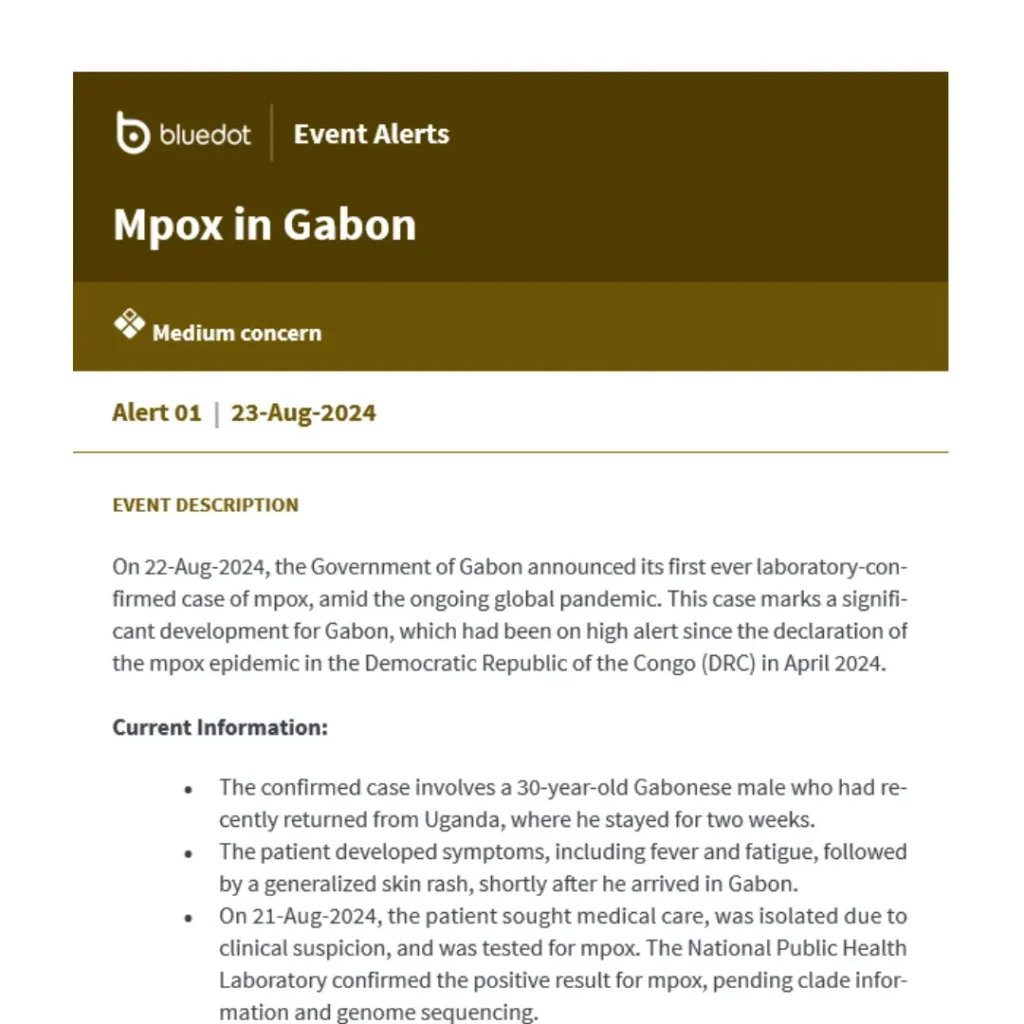
Mpox in Gabon - Alert 1
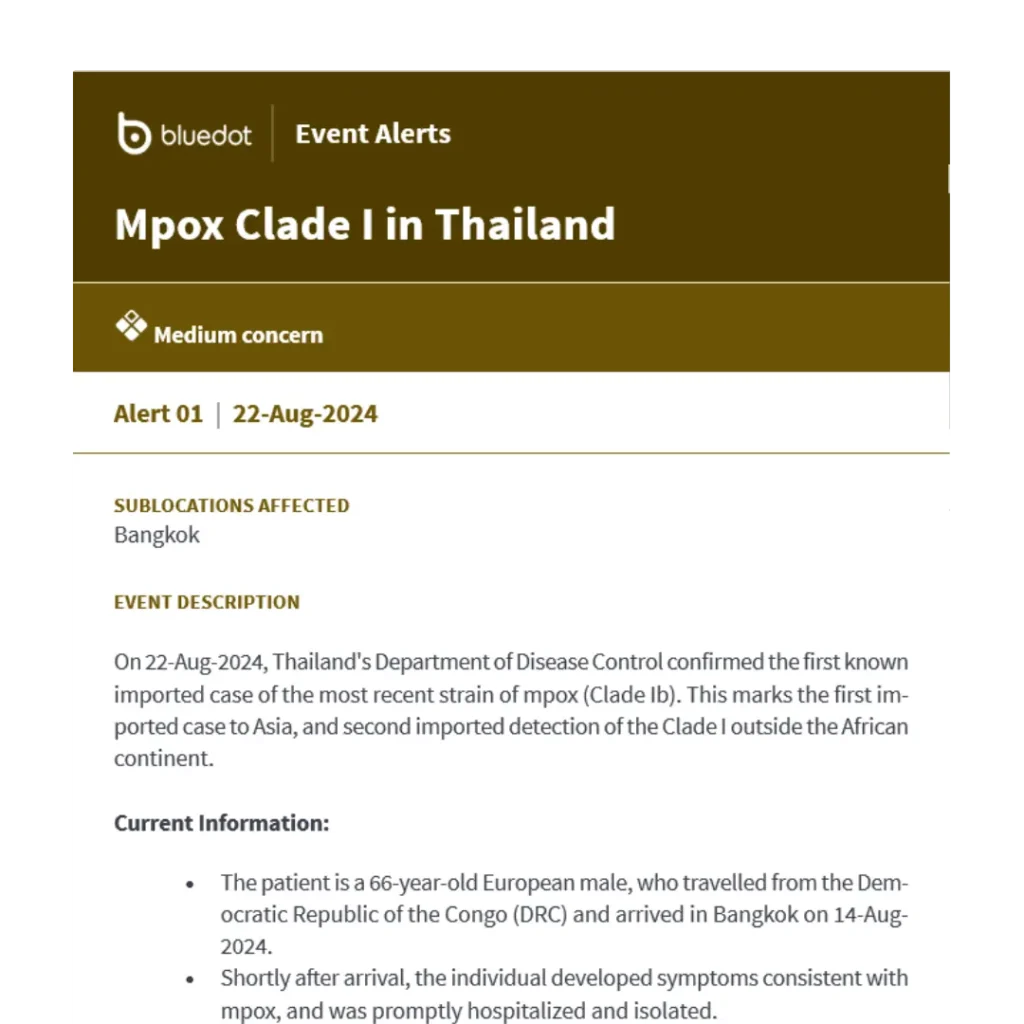
Mpox in Thailand - Alert 1
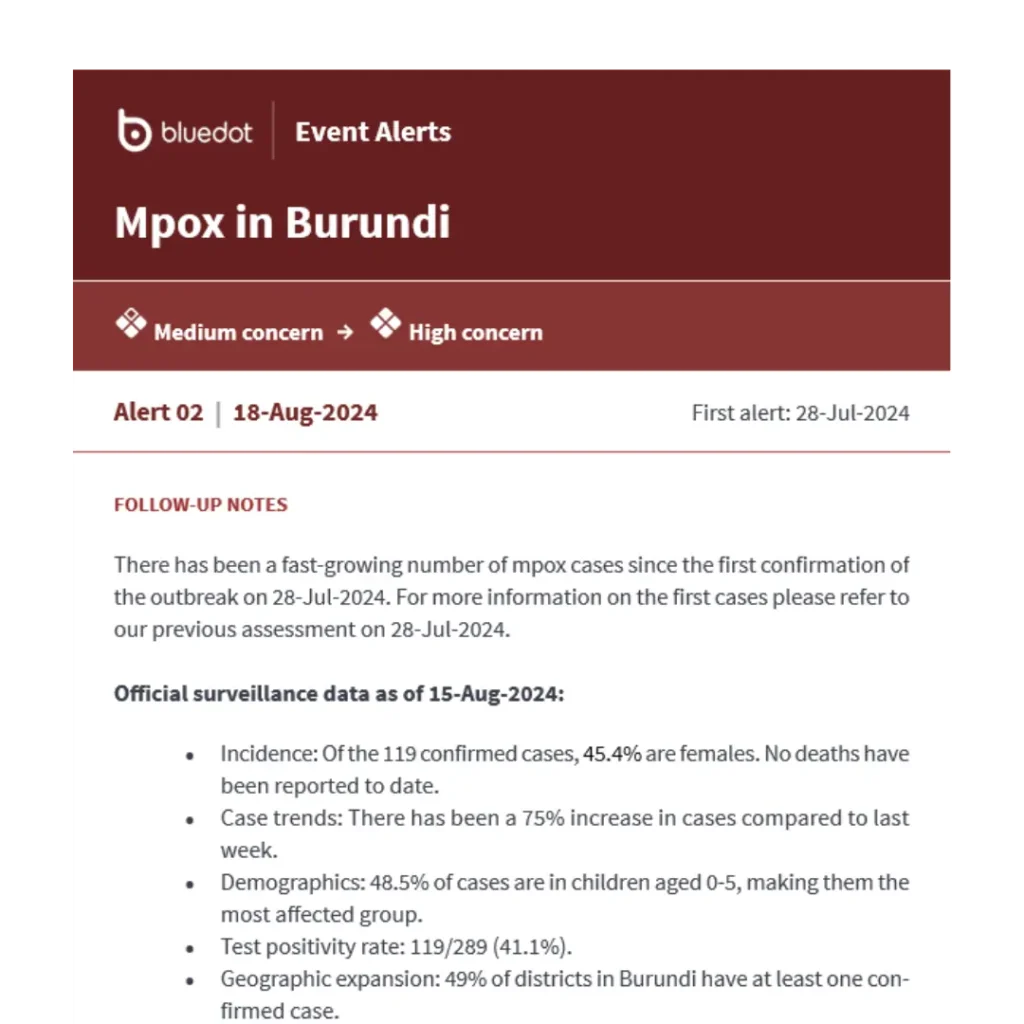
Mpox in Burundi - Alert 2

Mpox in Sweden - Alert 1
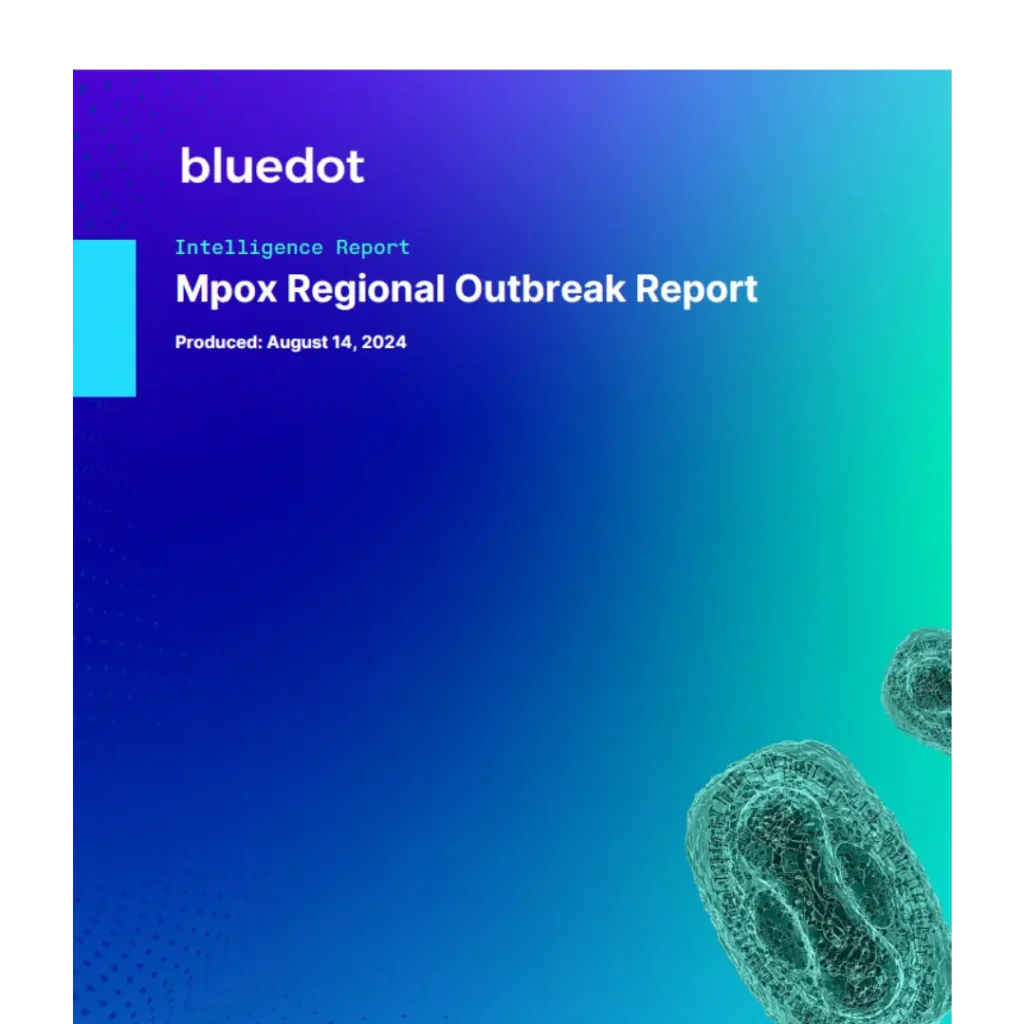
Mpox Regional Outbreak Report
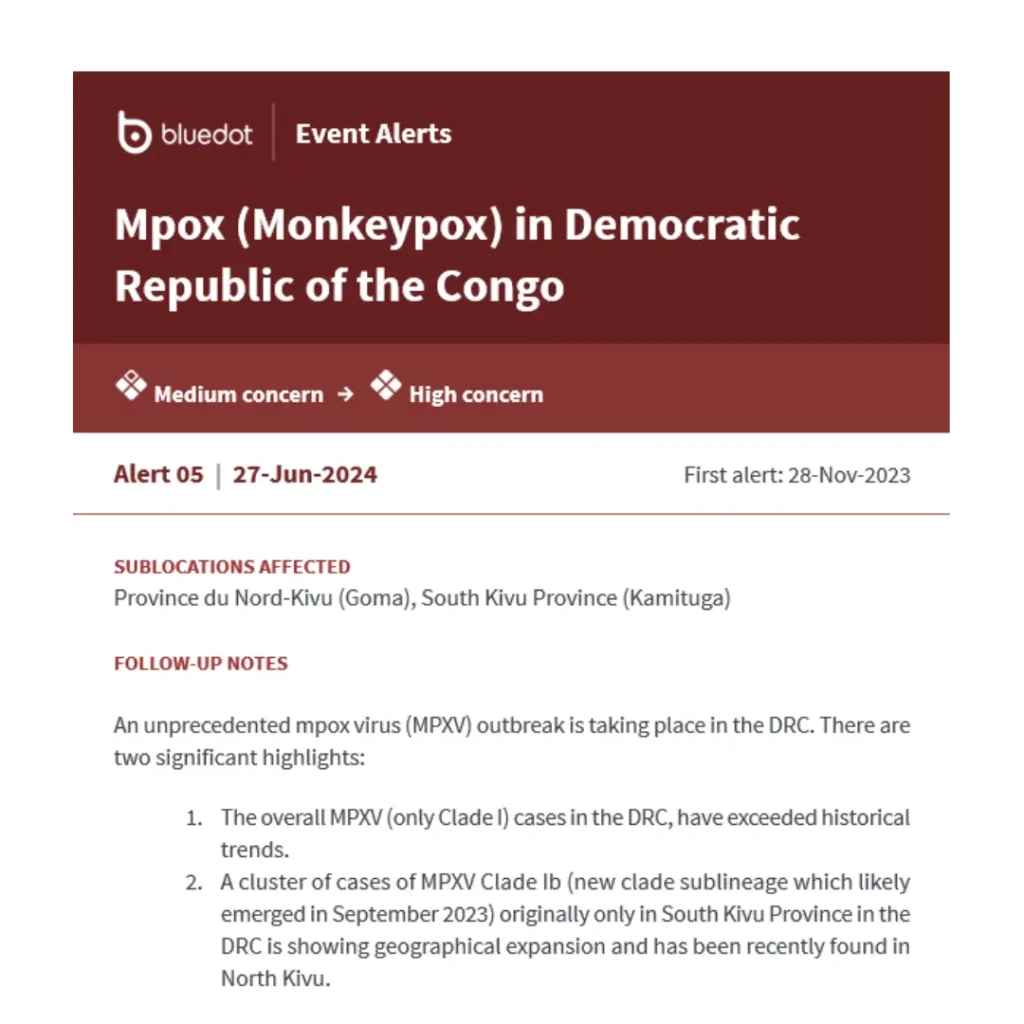
Mpox in DRC - Alert 6
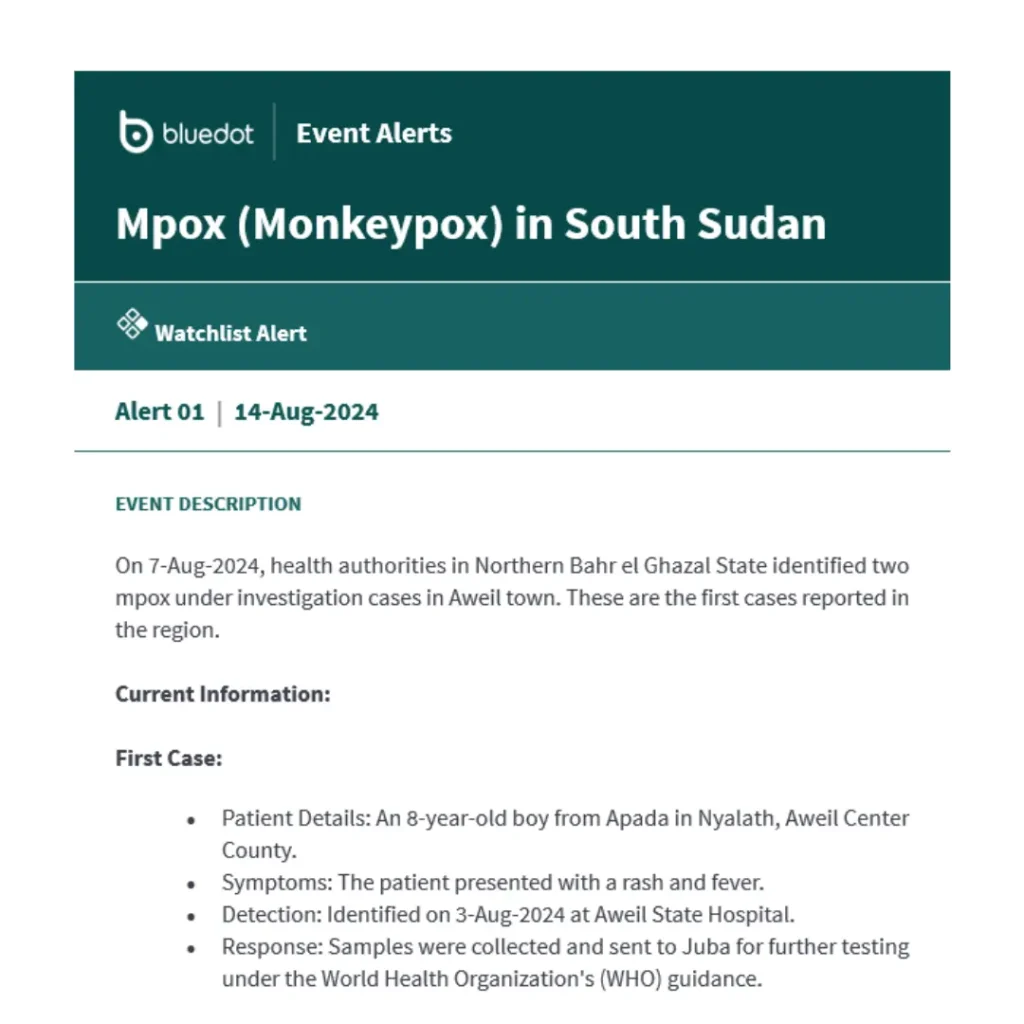
Mpox in South Sudan - Alert 1
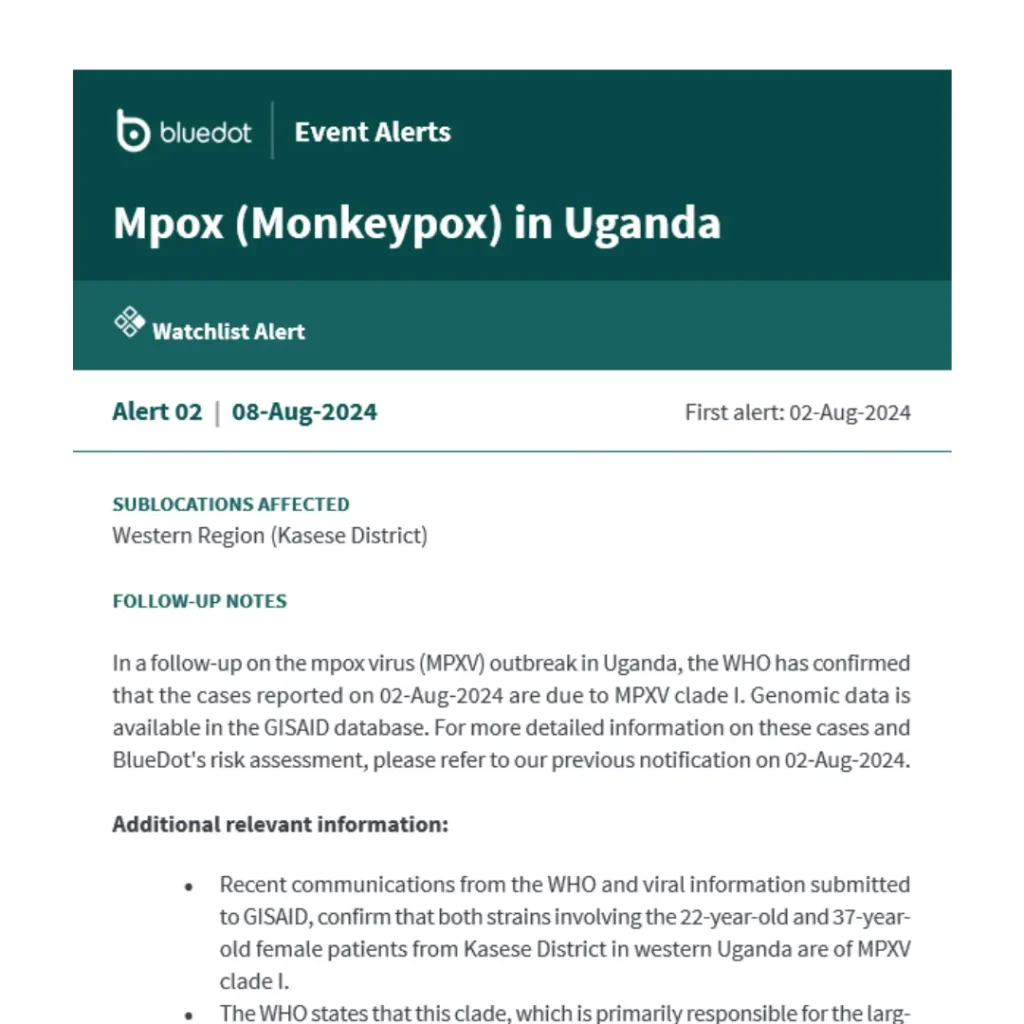
Mpox in Uganda - Alert 2
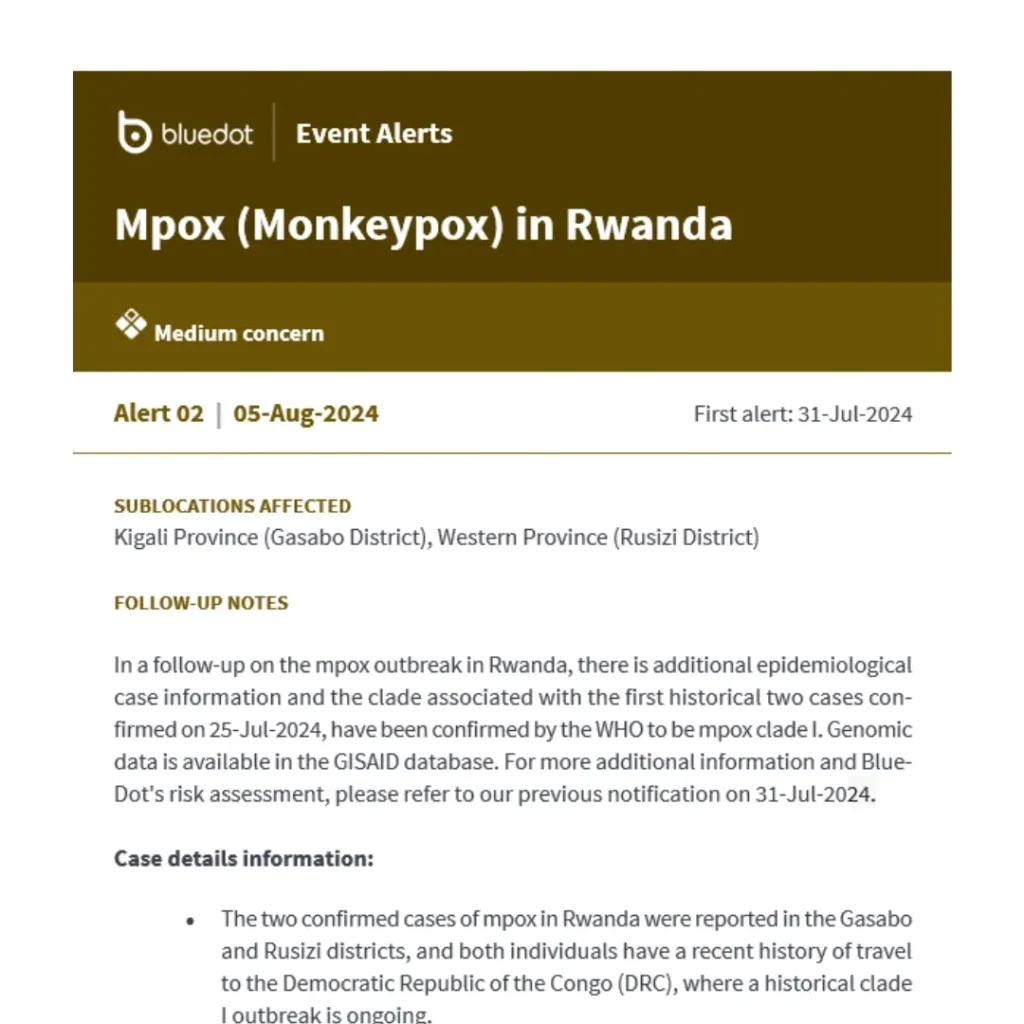
Mpox in Rwanda - Alert 2
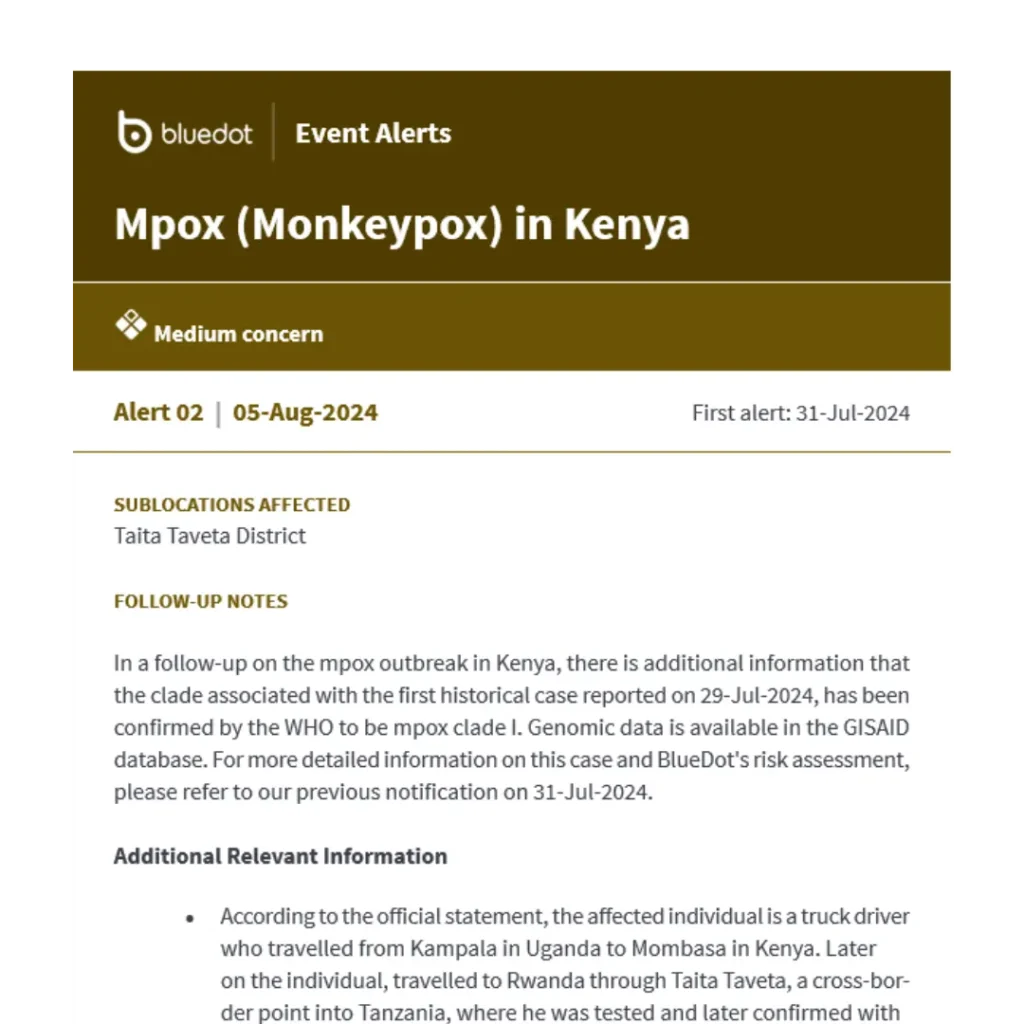
Mpox in Kenya - Alert 2
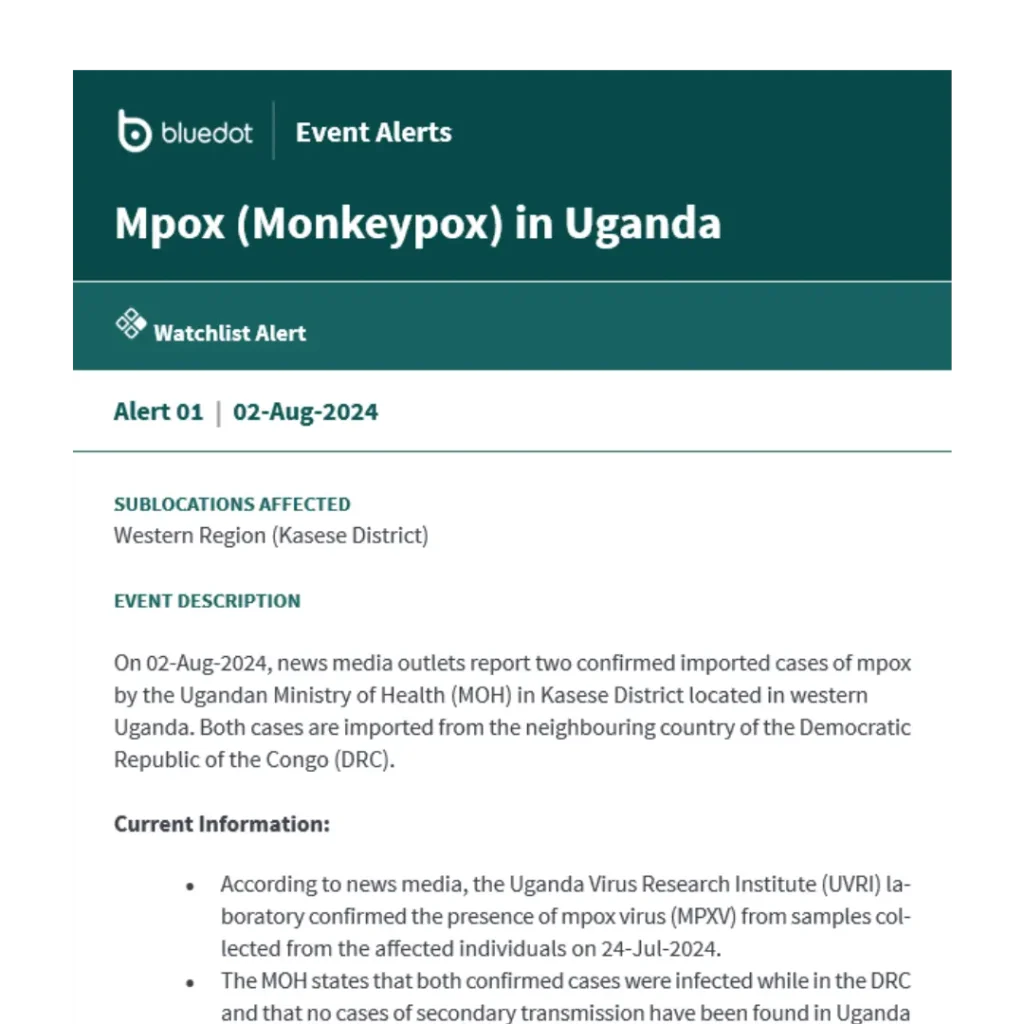
Mpox in Uganda - Alert 1
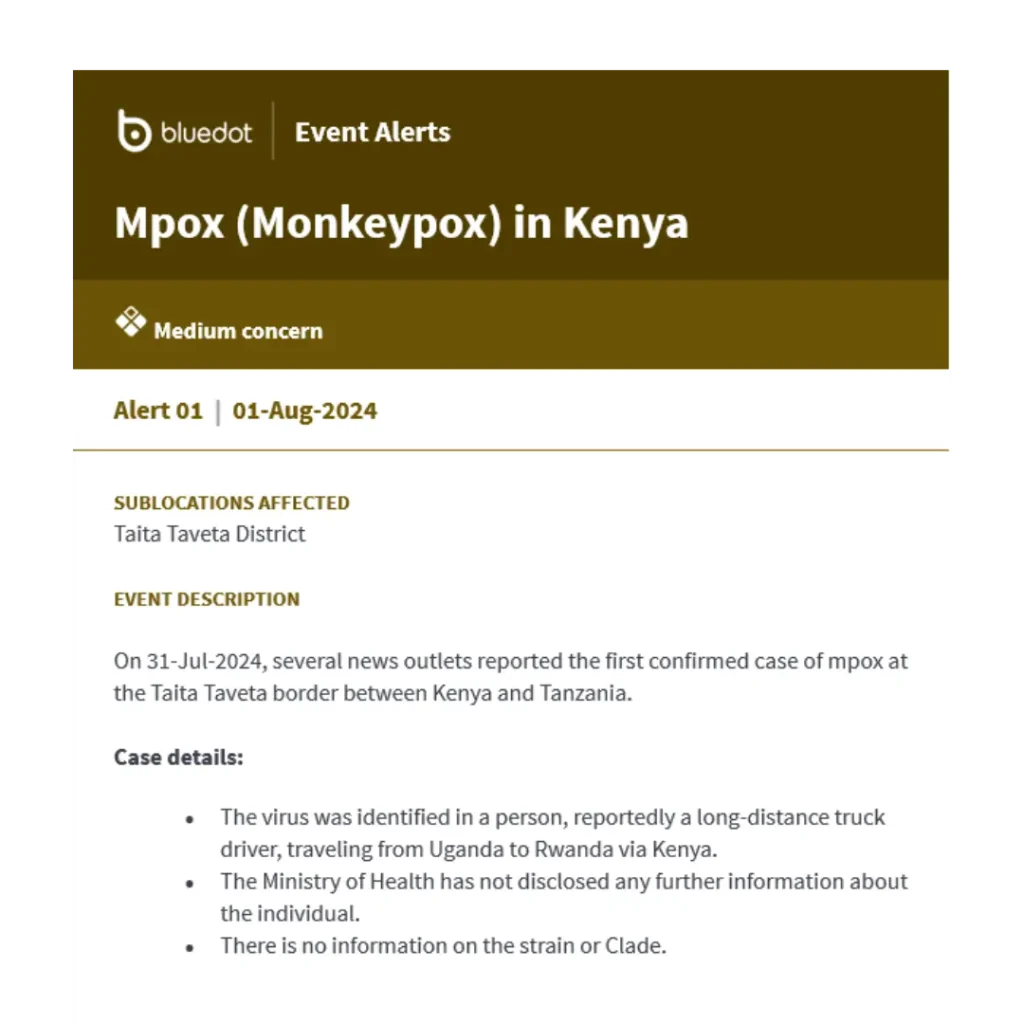
Mpox in Kenya - Alert 1

Mpox in Ivory Coast - Alert 1

Mpox in Rwanda - Alert 1
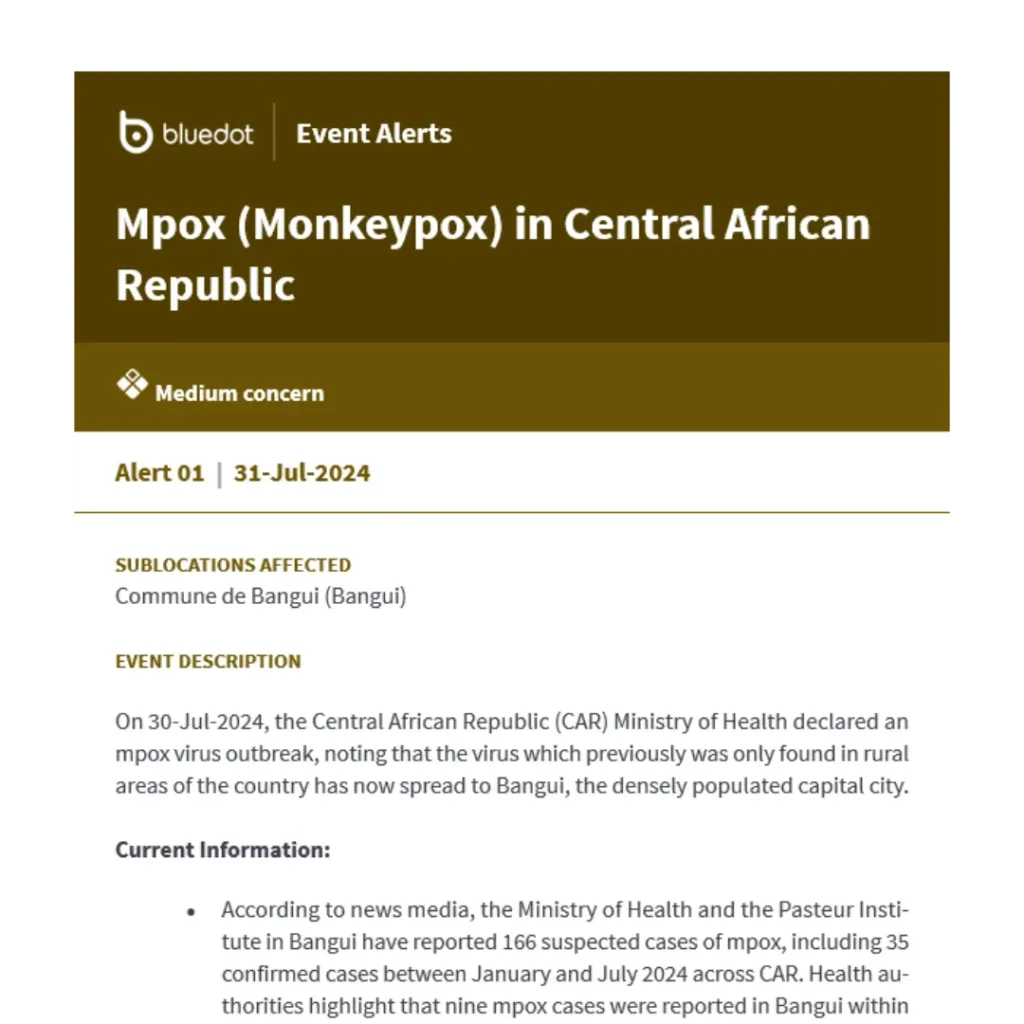
Mpox in Central Africa Republic - Alert 1
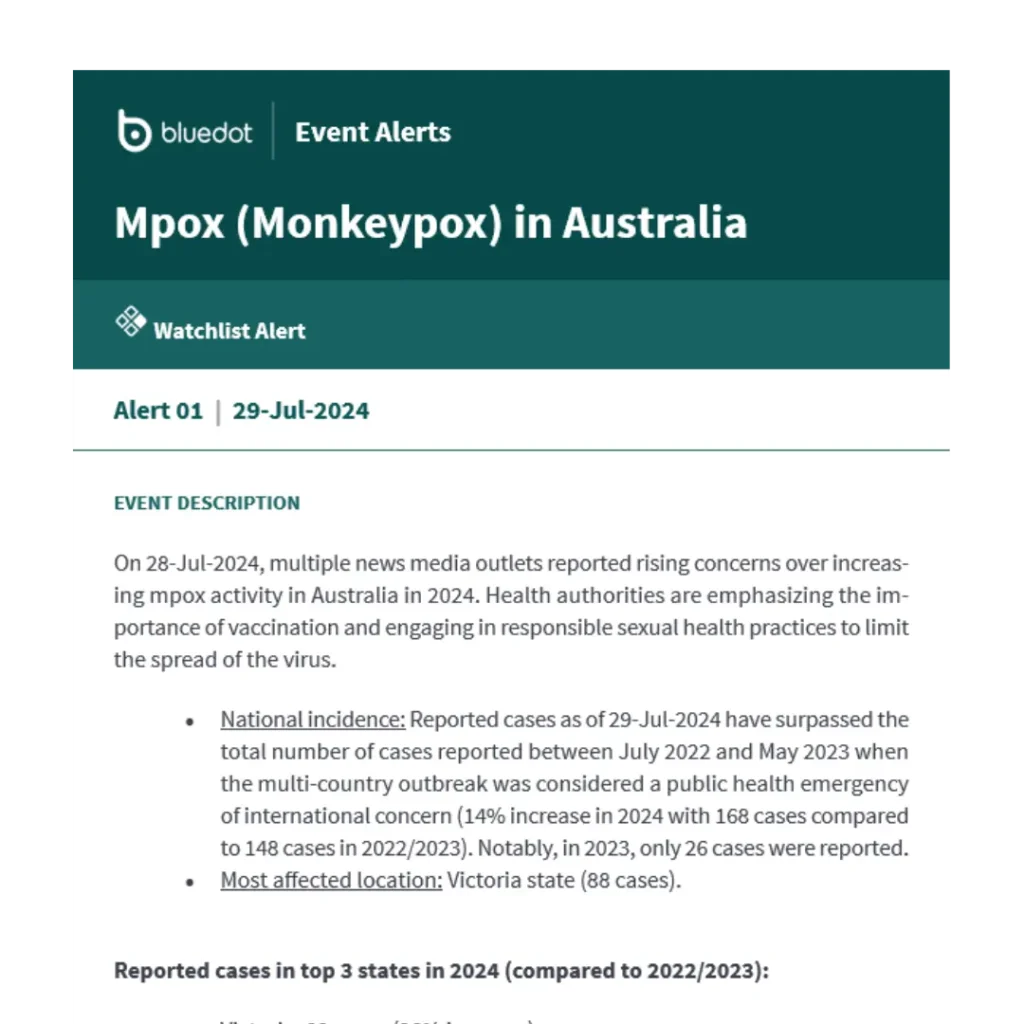
Mpox in Australia - Alert 1
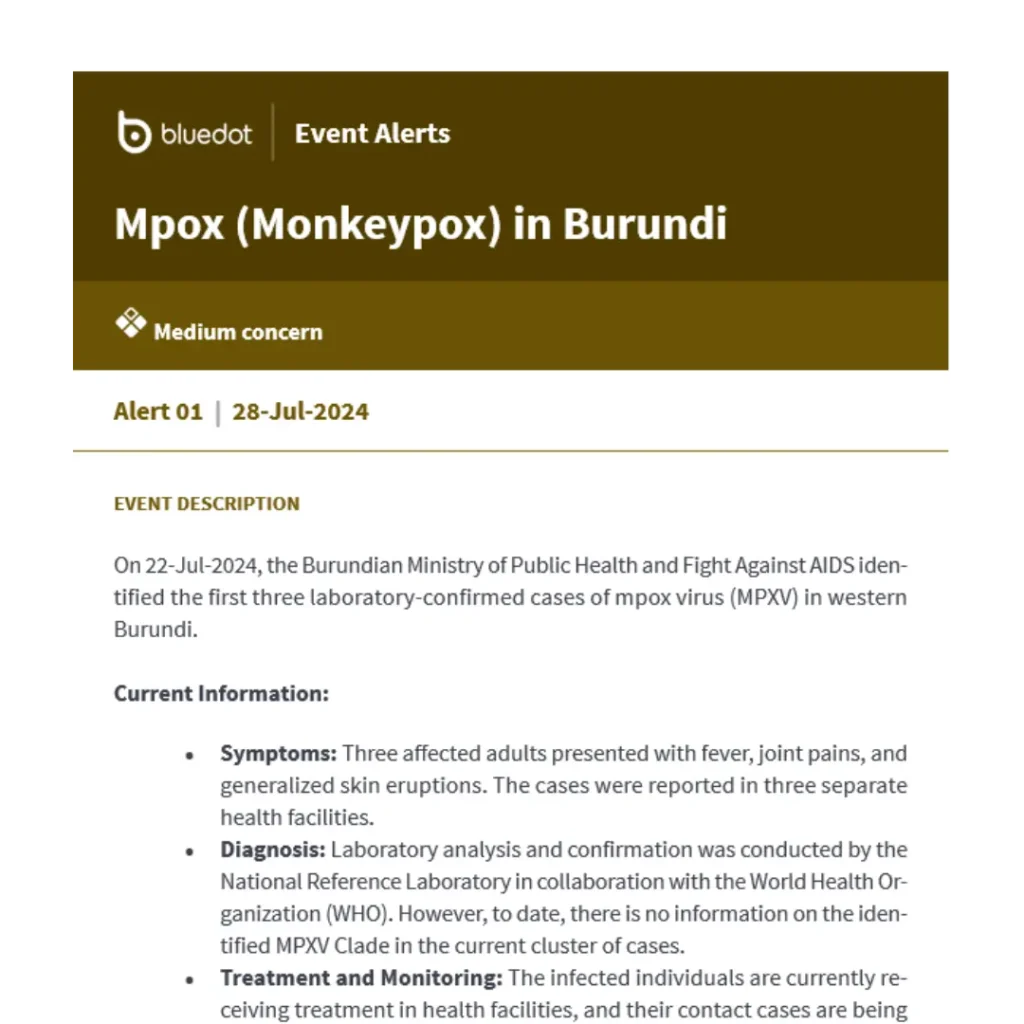
Mpox in Burundi - Alert 1
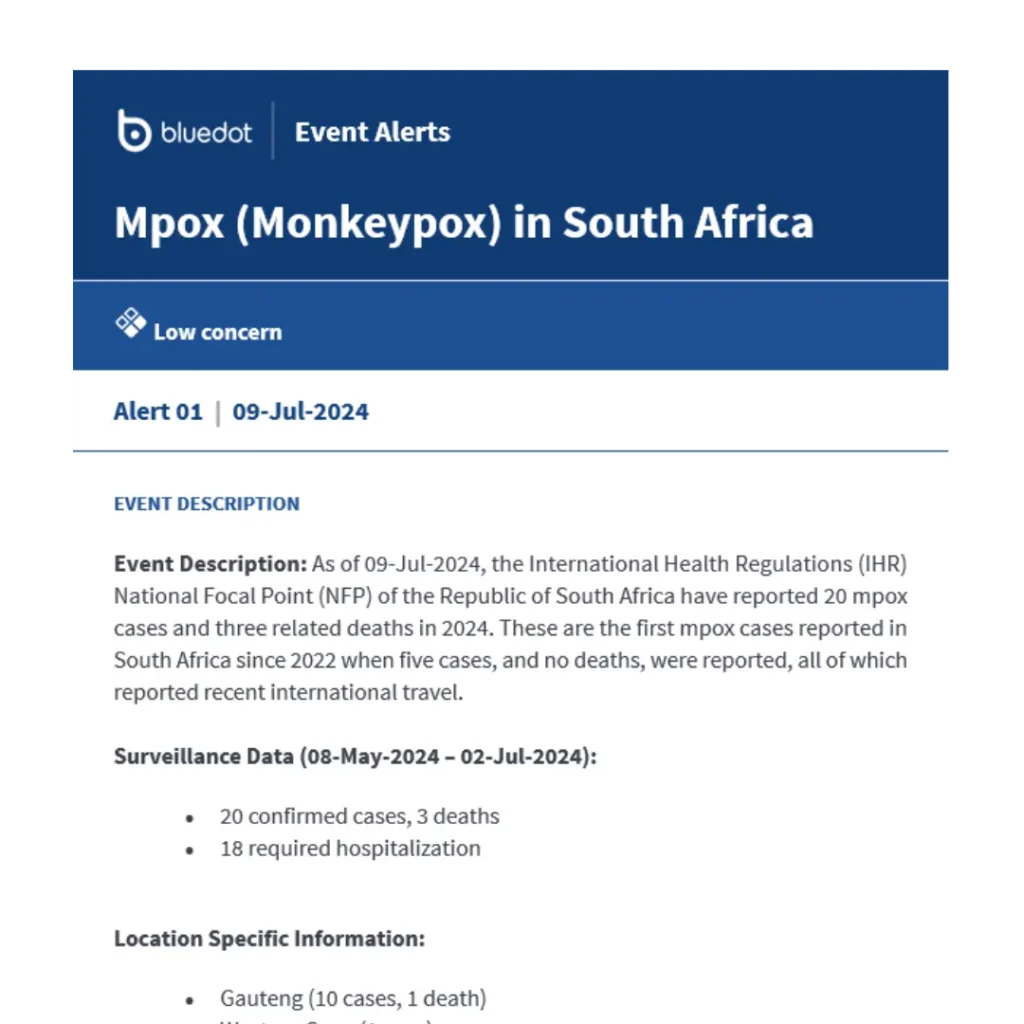
Mpox in South Africa - Alert 1

Mpox in DRC - Alert 5
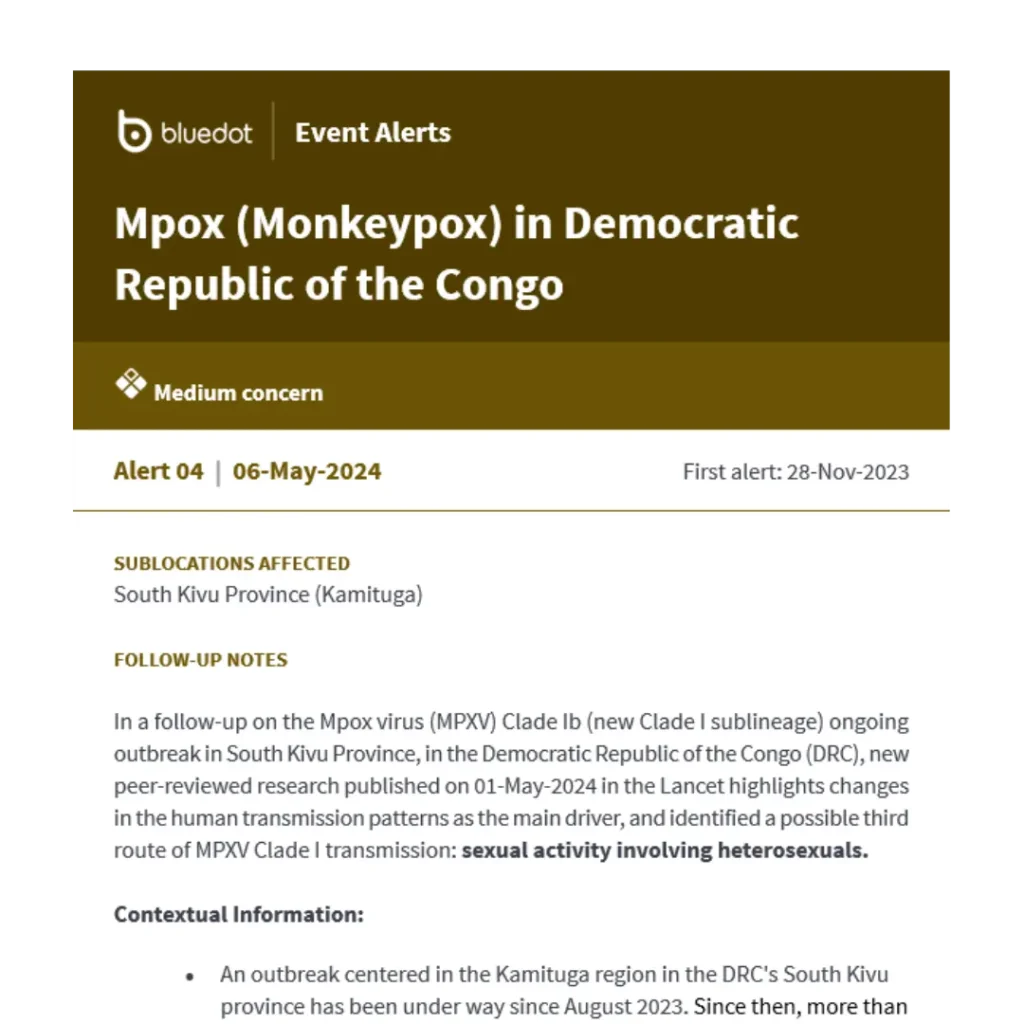
Mpox in DRC - Alert 4

Mpox outbreak in the DRC - Report
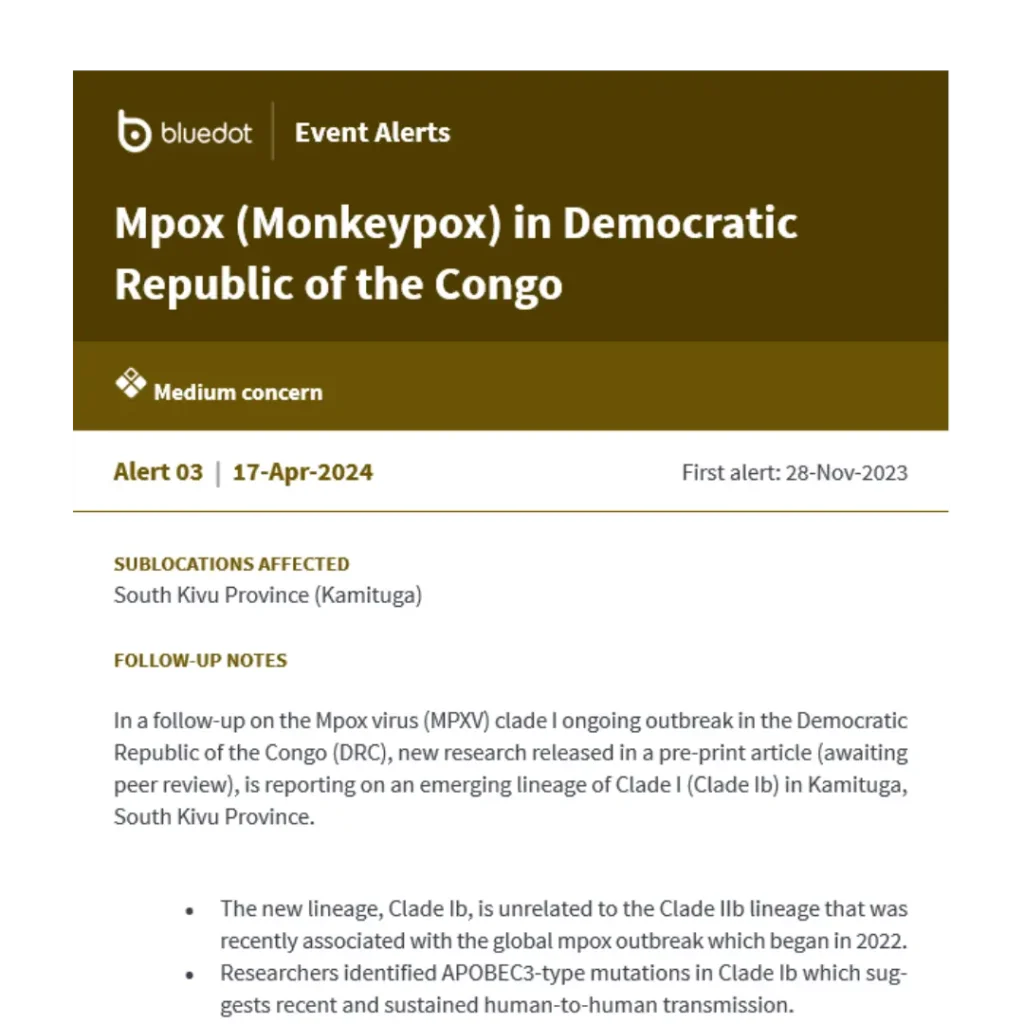
Mpox in DRC - Alert 3
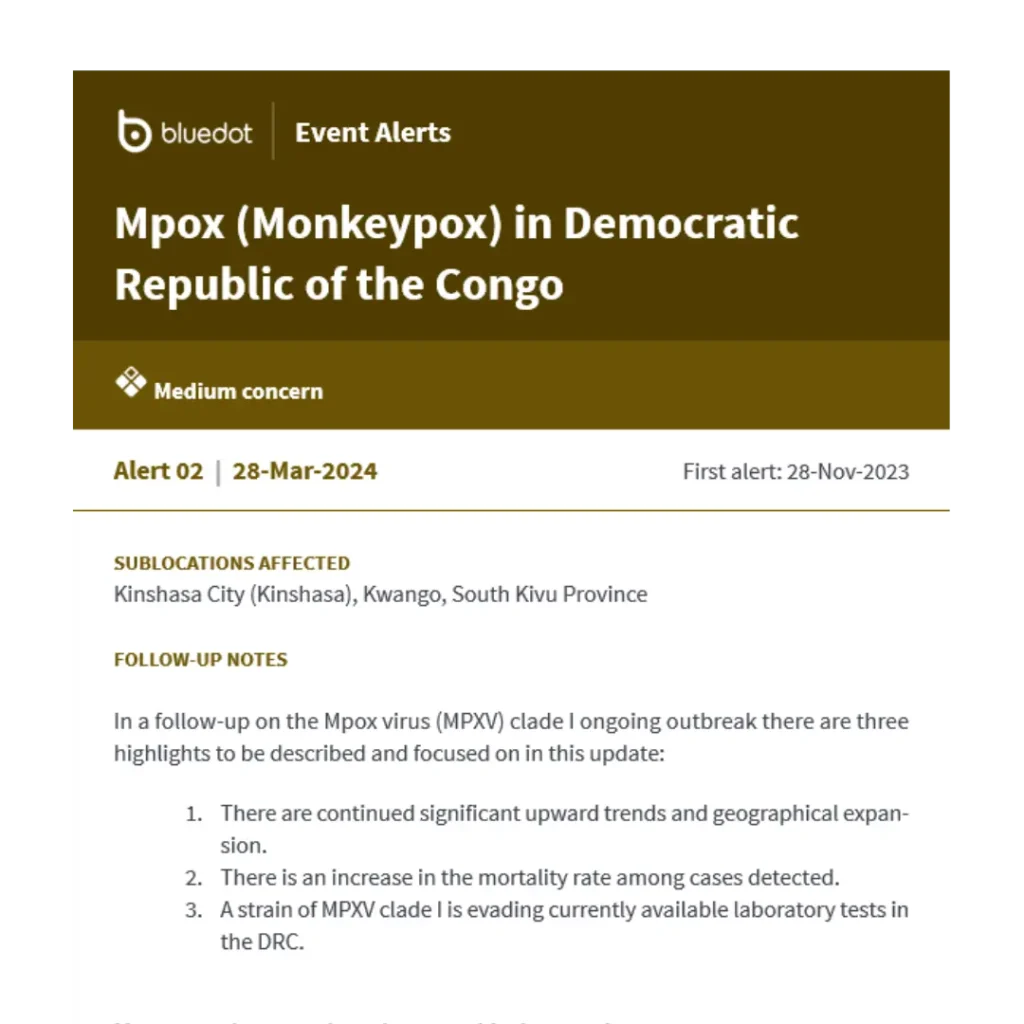
Mpox in DRC - Alert 2
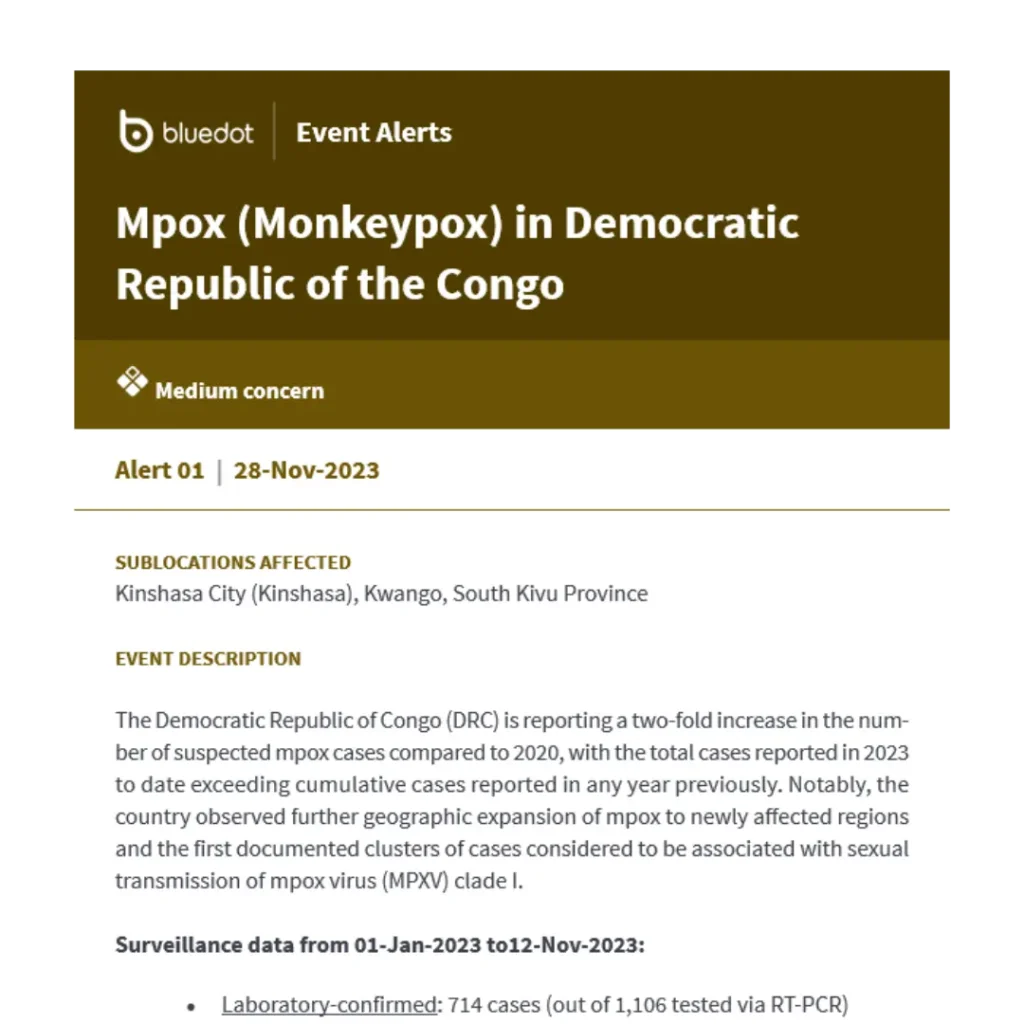
Mpox in DRC - Alert 1

Mpox Global Update - Report
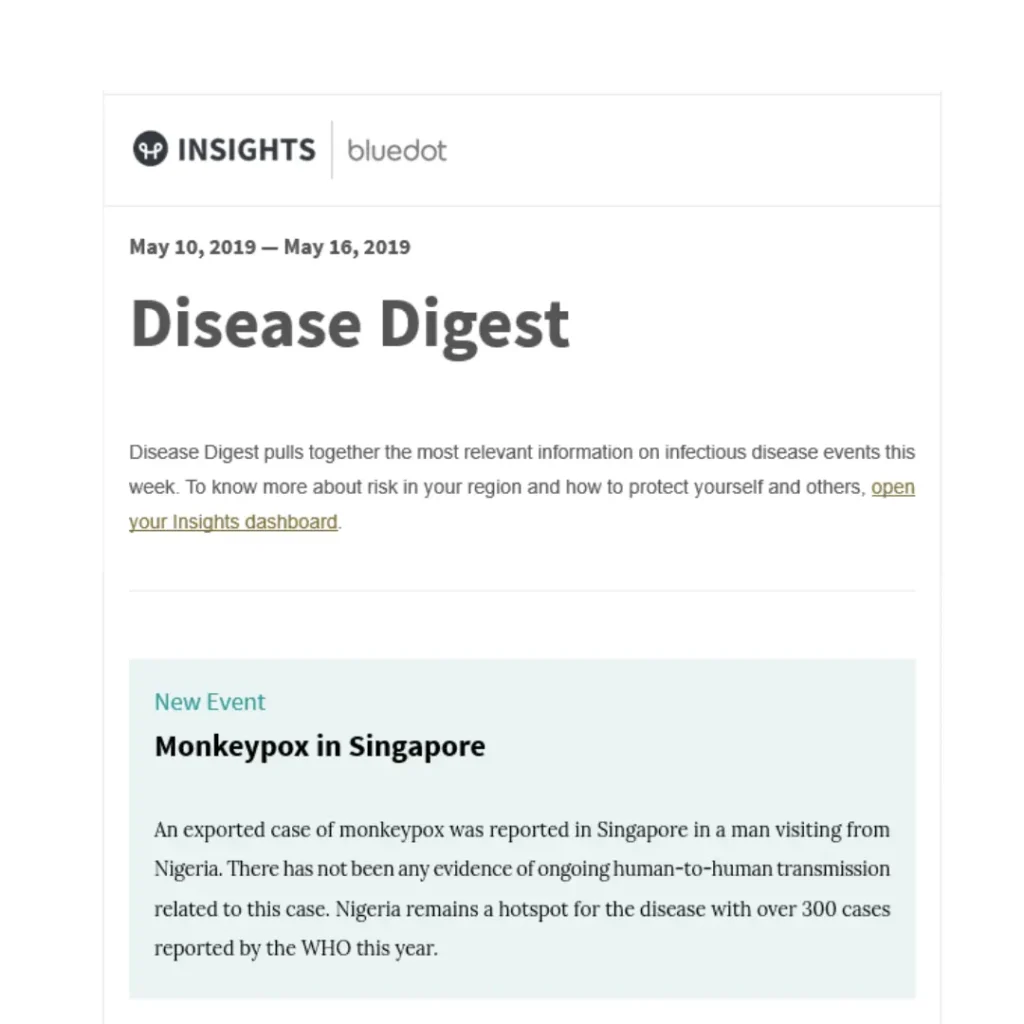
Mpox in Singapore - Notice
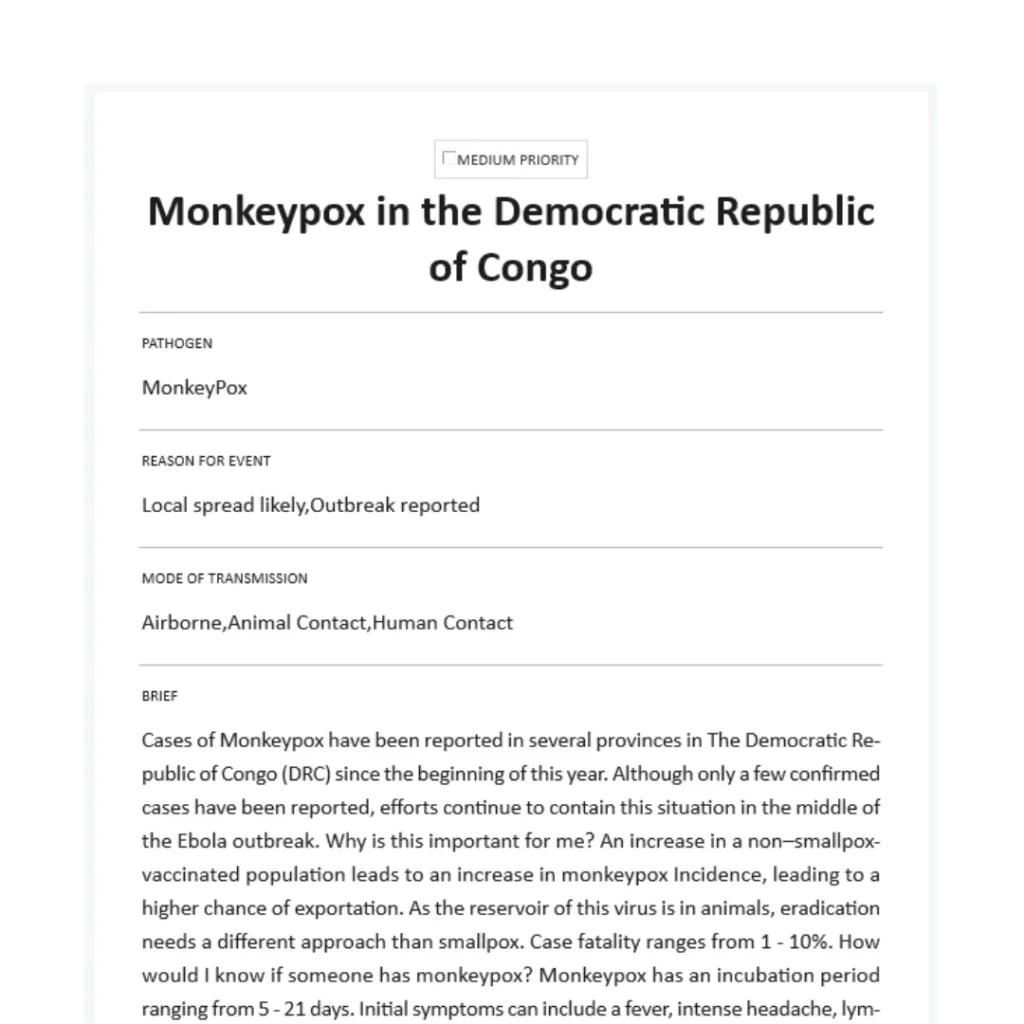
Mpox in DRC - Notice
Top air travel connectivity from current mpox Clade I outbreak regions
Last updated: 08.22.2024
Below shows the destinations with the forecasted greatest air travel connectivity in July and August from the countries with confirmed local transmission of Clade I (Democratic Republic of Congo, Burundi, Rwanda, Kenya, CAR, Congo). This data excludes connectivity between origin countries.

Get the latest updates on the global mpox outbreak
Stay on top of the evolving mpox outbreak – and more – with daily Personalized Briefs, which automatically collect, vet, and consolidate incoming intelligence across thousands of global media and official sources. Featuring rapid risk assessments, newly reported cases per clade, activity trends, and population travel intel, you’ll always be one step ahead.
“BlueDot's Personalized Briefs save me valuable time each day. The structured format, highlighting different activity timeframes, allows me to effortlessly compare outbreaks across countries and quickly identify which diseases need the most attention.”
Jieun Lee, Researcher, MSc, Infectious Disease Research Center, Korea Research Institute of Bioscience and Biotechnology
Get in touch
to learn more.
